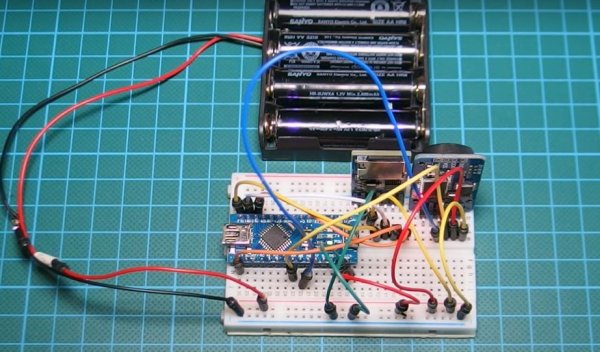Summary of Simple Arduino Data Logger
This article describes building an Arduino-based data logger that records environmental temperature periodically and stores the data on a micro SD card. The project uses the Arduino Nano microcontroller, a DS3231 RTC module (which provides real-time clock and temperature sensing), and a micro SD card module for data storage. Communication between the modules is via SPI for the SD card and I2C for the DS3231. The device is powered using batteries and involves standard prototyping components like a breadboard and wires.
Parts used in the Arduino Data Logger Project:
- DS3231 RTC Module
- Micro SD Card Module
- Arduino Nano
- Multimeter Mastech 8268
- AA Battery Holder
- Small Breadboard
- Wires
- Batteries
Introduction
A data logger is an electronic device or instrument that records data over a period of time. It allows the user to record time or location stamped data which can be viewed at a later time or real time.

Irrespective of the type of data being logged or the kind of data logger, these devices usually contain two main units, the sensor unit and the storage/communication unit. The sensor unit may involve the use of an external instrument or a sensor embedded within the device. Increasingly, but not entirely, data logging devices are becoming more based on micro processors and microcontrollers, which has opened up a whole new level of data gathering and storage.
For today’s tutorial, our focus will be on building an Arduino based data logger that reads the temperature of the environment every few minutes and saves the data in a micro SD card.
The Project is based on the Arduino Nano and the DS3231 RTC Module which has a temperature sensor and a real time clock on board.
Required Components
The following components are required to build this project:
- DS3231 RTC
- Micro SD card module
- Arduino Nano
- Multimeter Mastech 8268
- AA Battery holder
- Small Breadboard
- Wires
- Batteries
Schematics
Connect the components as shown in the circuit diagram below.
The data logger is made up of the Arduino Nano, the Ds3231 RTC Module, and a micro SD card module. The micro SD card module communicates with the Arduino over SPI as explained in a detailed tutorial here, while the DS3231 module communicates with the Arduino over I2C. A detailed tutorial on the DS3231 module can also be found here.
To simplify the connection further, a pin map of the connections in the schematics is done below.
Connection between Arduino and Micro SD card Module:
Read more: Simple Arduino Data Logger
